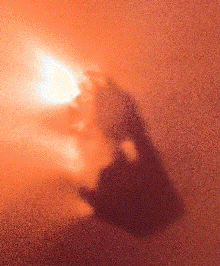This image of the nucleus of Halley's comet comes from the Giotto spacecraft.
Click on image for full size
JPL
Halley's comet
Halley's comet is the most famous comet of all.
Halley's comet is named after Edmond G. Halley who was the first to suggest that comets were in orbit around the Sun. He suggested that a certain comet returned regularly every 76 years, and was, in fact, the same one which had been observed since 240 BC! In 1682 he predicted the comet would return again in 1758, and sure enough, the comet arrived in March 1759.
For hundreds of years humankind has wondered what the nucleus of Halley's comet was really like. This wonderful picture from the Giotto spacecraft gives us the answer. Data taken by several spacecraft suggests that the comet is mostly made of ice.
Halley's comet is next scheduled to return in 2062.
You might also be interested in:
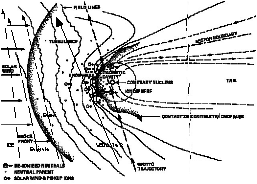
Six spacecraft flew to Halley's comet in 1986. There were two spacecraft launched from Japan, named Suisei and Sakigake, and two from the Soviet Union, named Vega 1 & 2. One spacecraft, ICE, was from the
...more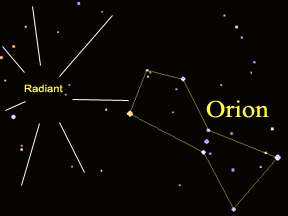
Meteor showers are times when you can see a lot of meteors in one night. There are several different meteor showers. Each meteor shower happens at the same time every year. There is a meteor shower in
...more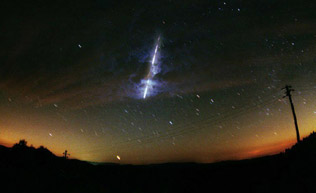
The Leonid meteor shower is one of several major meteor showers that occur on roughly the same date each year. The Leonids typically "peak" (are at their greatest level of activity) in mid to late November.
...more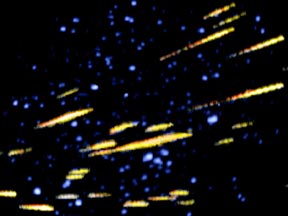
A meteor shower is an astronomical event during which many meteors can be seen in a short period of time. Most meteor showers have a peak activity period that lasts between several hours and a couple of
...more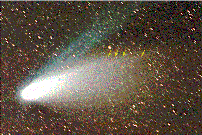
Comet Hale-Bopp was one of the brightest comets of all time. Astronomers witnessed the comet spew out intermittent bursts of dust. The surface seemed to be an incredibly dynamic place, with 'vents' being
...more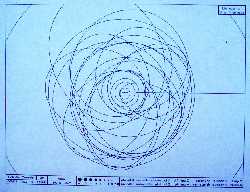
Astronomers have noticed a group of comets which they call the Jupiter Family of Comets. This family of comets is to be found circling between Jupiter and the sun, as shown in this picture. The comets
...more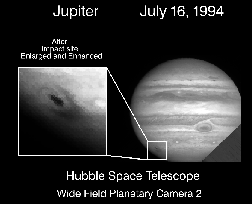
Scientists have learned a great deal from the crash of comet Shoemaker-Levy 9. Scientists traced the orbit of the comet backwards in time to guess its origin. The crash of a comet like Shoemaker-Levy 9
...more


